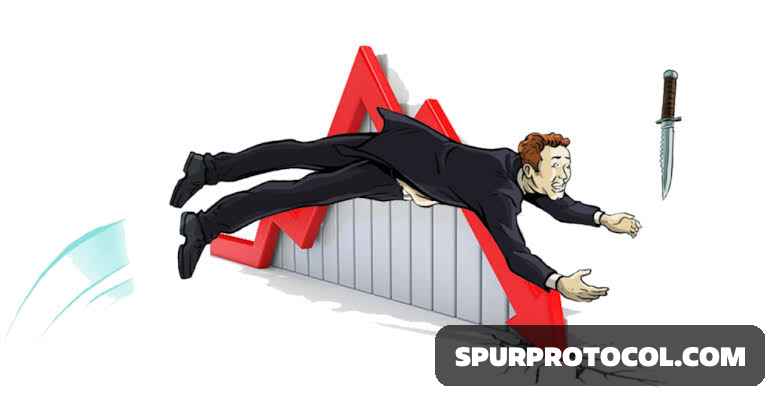What Is A Falling Knife In Trading?
A falling knife refers to the action of purchasing an asset while it's rapidly declining in price under the expectation that it will bounce.
Go Back

🕒 3:16 PM
📅 May 12, 2025
✍️ By Ecojames
What Is a Falling Knife?
The term "falling knife" refers to a sharp, rapid decline in the price or value of a cryptocurrency. It’s often used in the context of advice like, "Don’t try to catch a falling knife," suggesting that you should wait until the price stabilizes before making any moves.
Causes Behind a Falling Knife
A falling knife may happen for various reasons. The causes may include but are not limited to:
1. Poor earnings
When companies report their earnings numbers, and they are below expectations, the stock may drop and result in volatile swings until supply and demand for the stock re-stabilizes.
2. Equity offering
If a company requires the need to raise capital, it may issue additional shares to the public. It would result in current shareholder dilution, which would become the impetus to a sell-off.
3. Economic reports
If the Federal Reserve or a bank releases underwhelming or negative news regarding the current economic landscape, investors would quickly sell stocks or move assets to different types of investments causing stock prices to drop.
4. Support levels
If a security breaks below its support line, technical traders believe the price will continue to dive before reaching the next level of support.
Risks Associated with Falling Knife
1. Potential for Significant Losses
The most apparent risk is the potential for substantial financial losses. When an asset's price plummets, catching the falling knife can result in buying at prices that continue to drop, leading to immediate and severe losses.
2. False Bottoms and Dead Cat Bounces
Traders may mistakenly interpret temporary price stabilisations or minor recoveries as the end of the decline, only to face further drops. These false bottoms and dead cat bounces can trap traders in losing positions.
3. Increased Volatility
Falling knives are often accompanied by heightened market volatility, making it challenging to analyse short-term price movements. This volatility can result in rapid and unexpected changes in asset prices.
4. Psychological Challenges
The psychological impact of trading falling knives should not be underestimated. The stress and emotional strain of dealing with sharp losses can lead to irrational decision-making, such as holding onto losing positions for too long or making impulsive trades.
5. Technical Analysis Limitations
While technical indicators can help identify potential entry points, they are not foolproof. The rapid and severe nature of falling knives can render technical analysis less reliable, as price movements may not follow traditional patterns.
6. Liquidity Issues
During sharp declines, liquidity can dry up, leading to wider spreads and slippage. This makes it harder to execute trades at desired prices, potentially exacerbating losses.
Limitations of the falling knife strategy
1. It can be difficult for traders to have perfect timing of the price bottom. There is no ultimate guarantee that the price will continue to fall, even after identifying all possible criteria of a falling knife stock or crypto . This is why it is crucial to always trade with a stop-loss order.
2. Prices can take a long time before moving up. This can frustrate investors anticipating the price movement in a particular direction.

